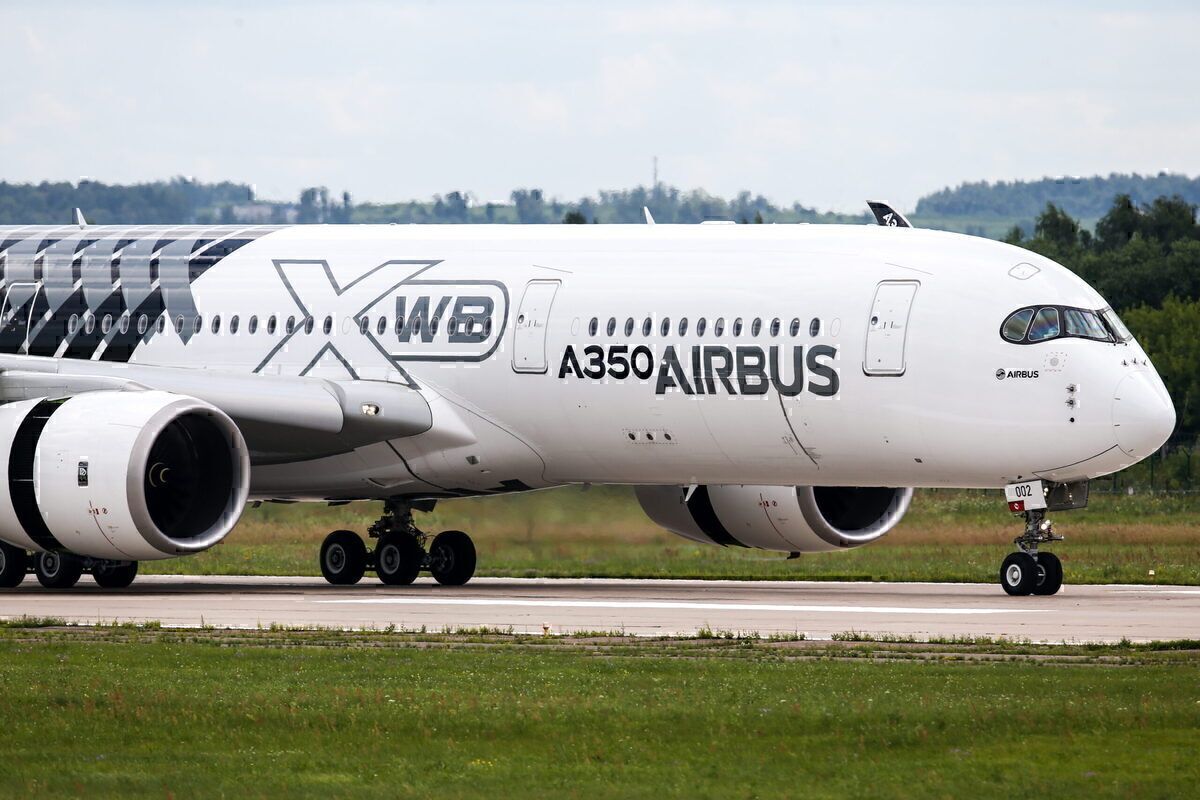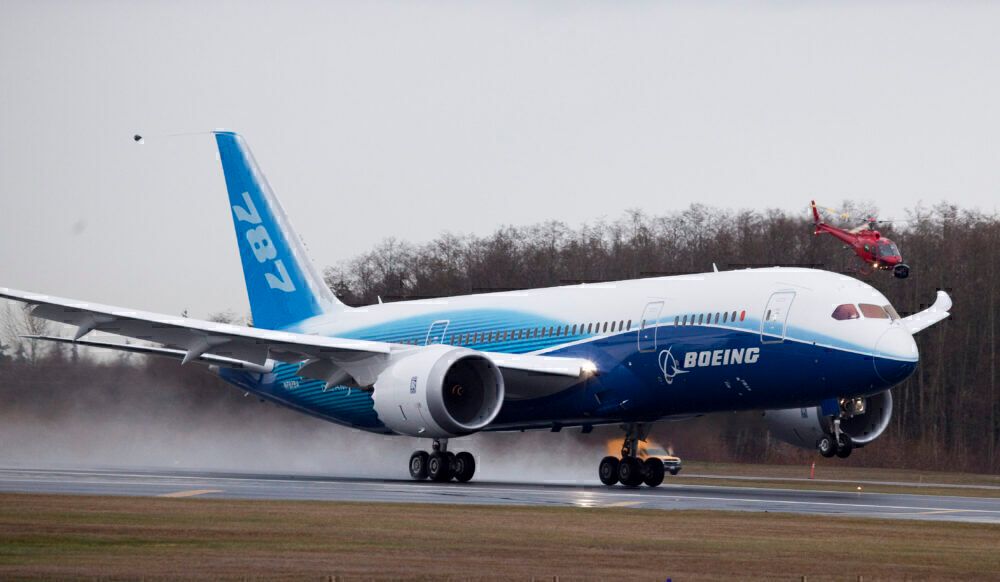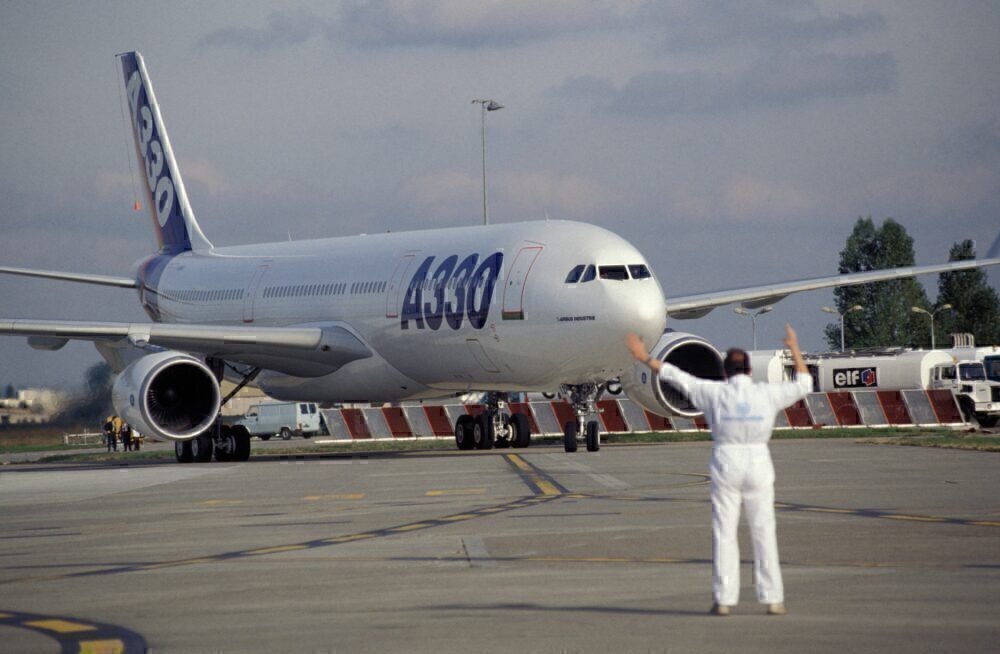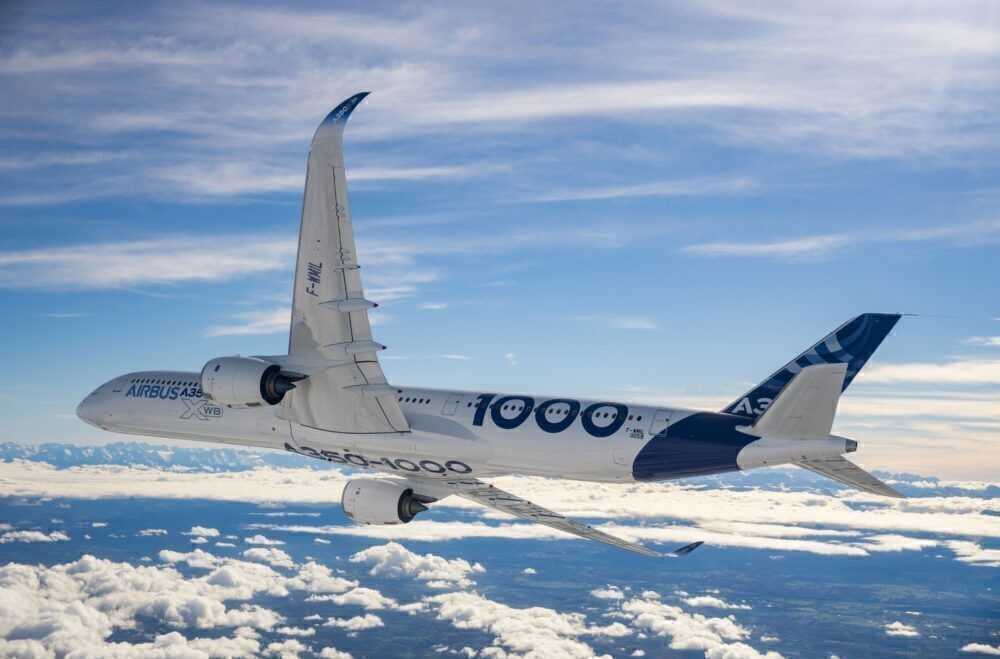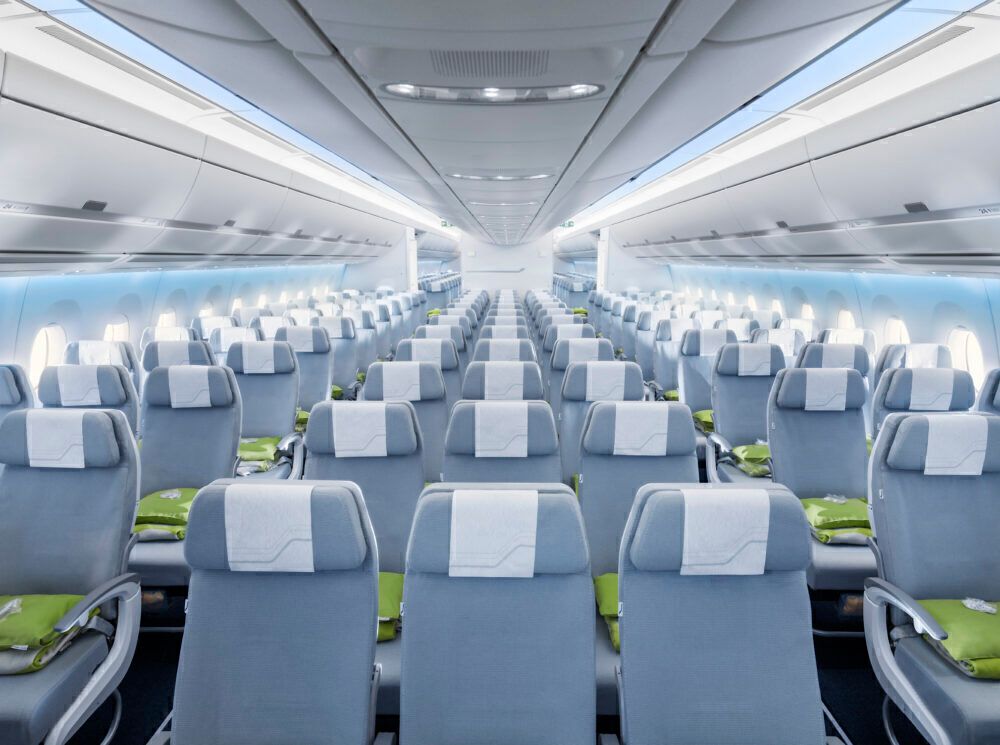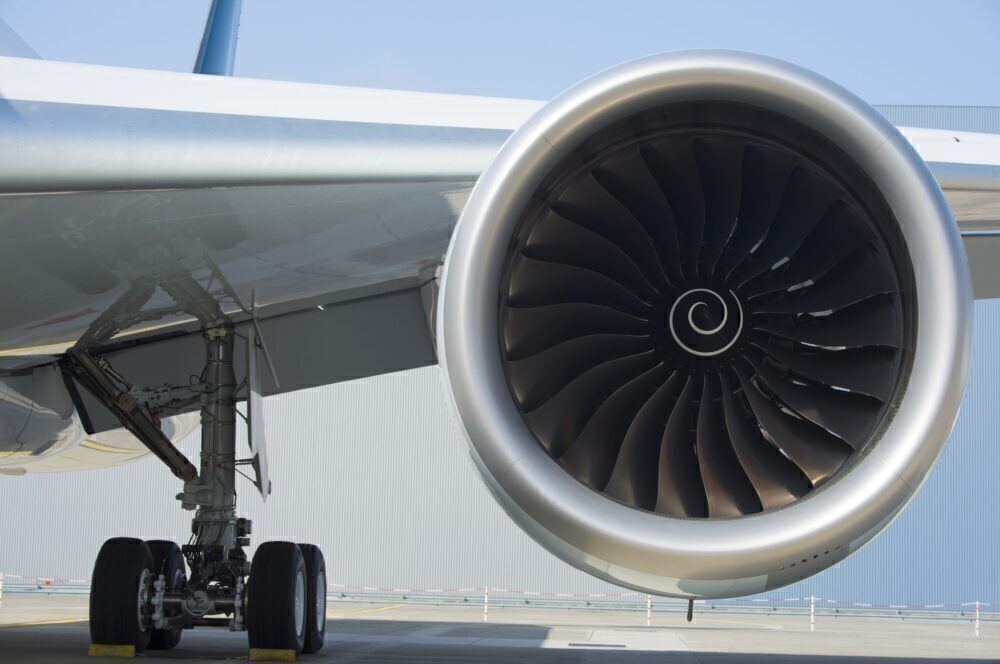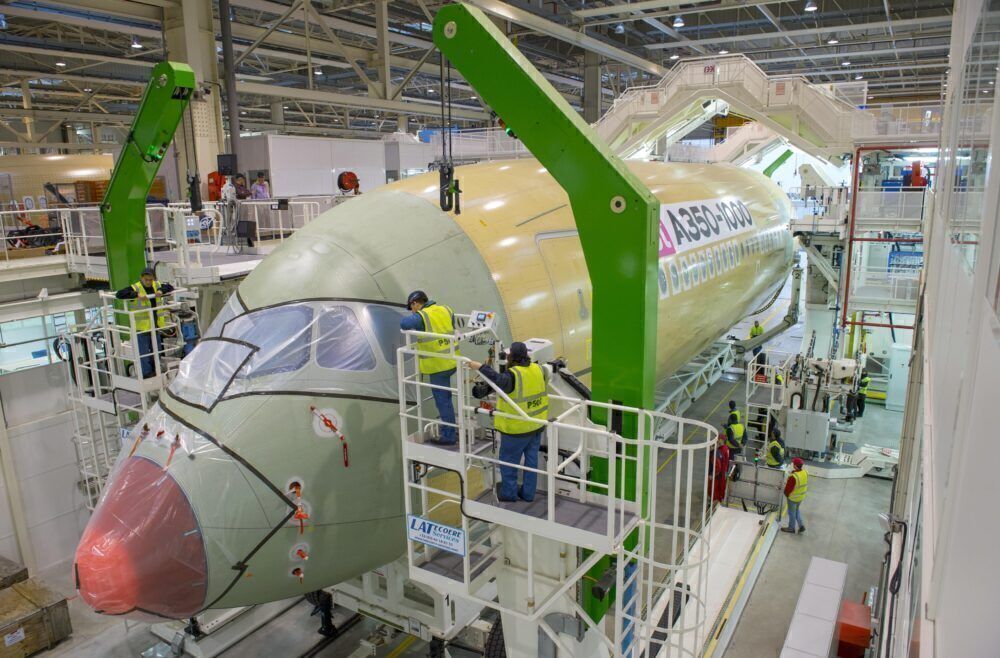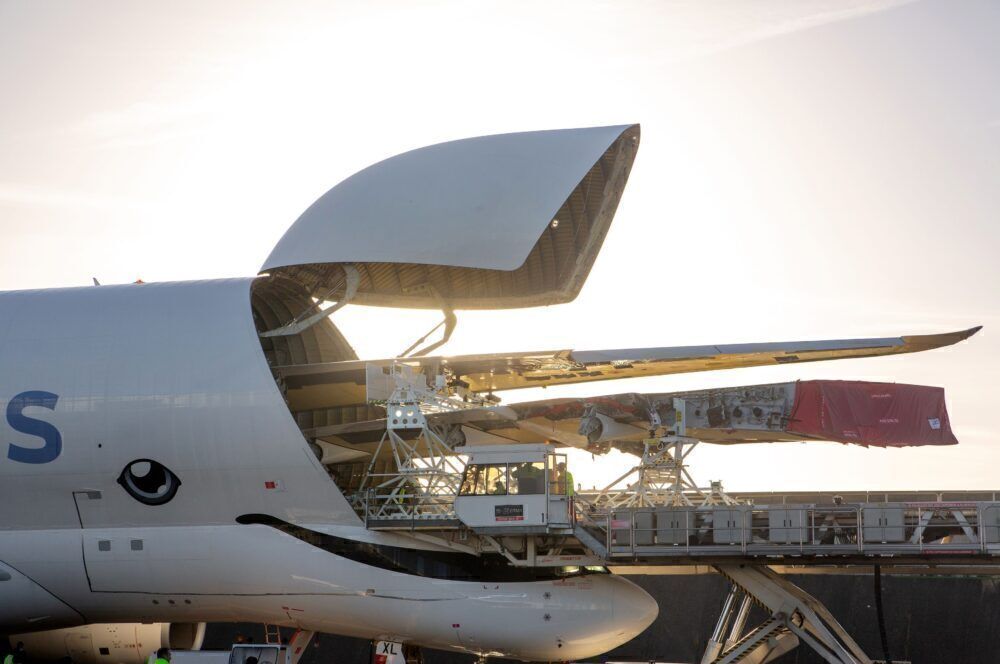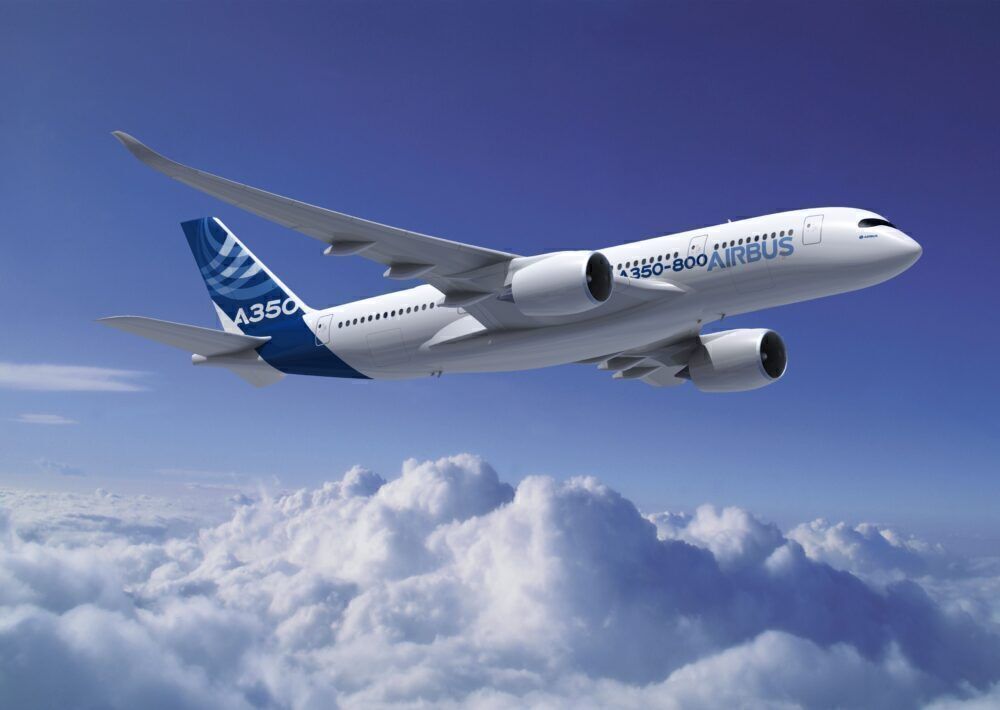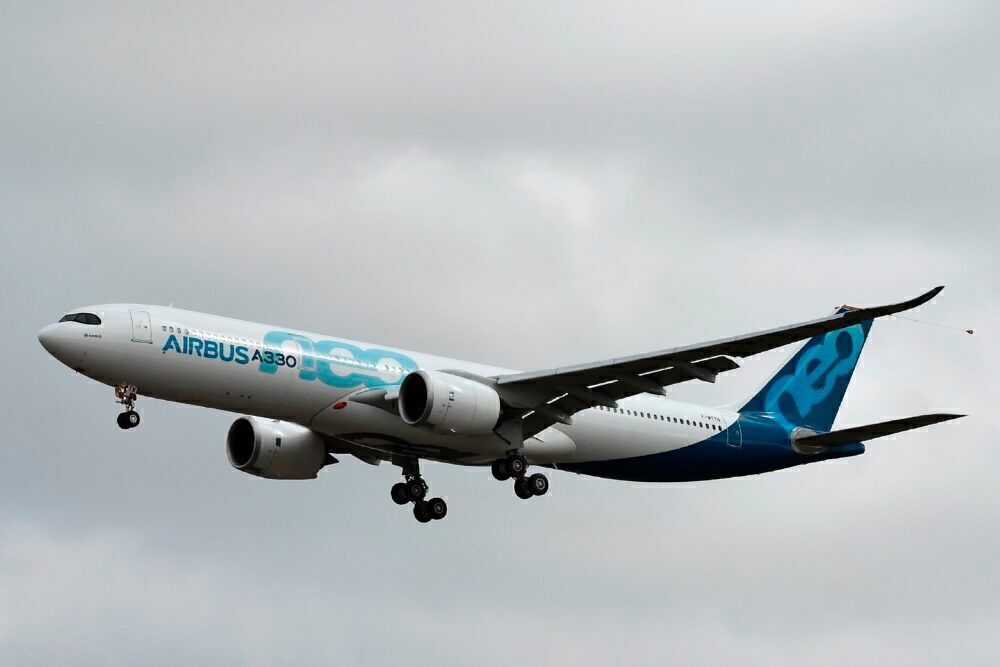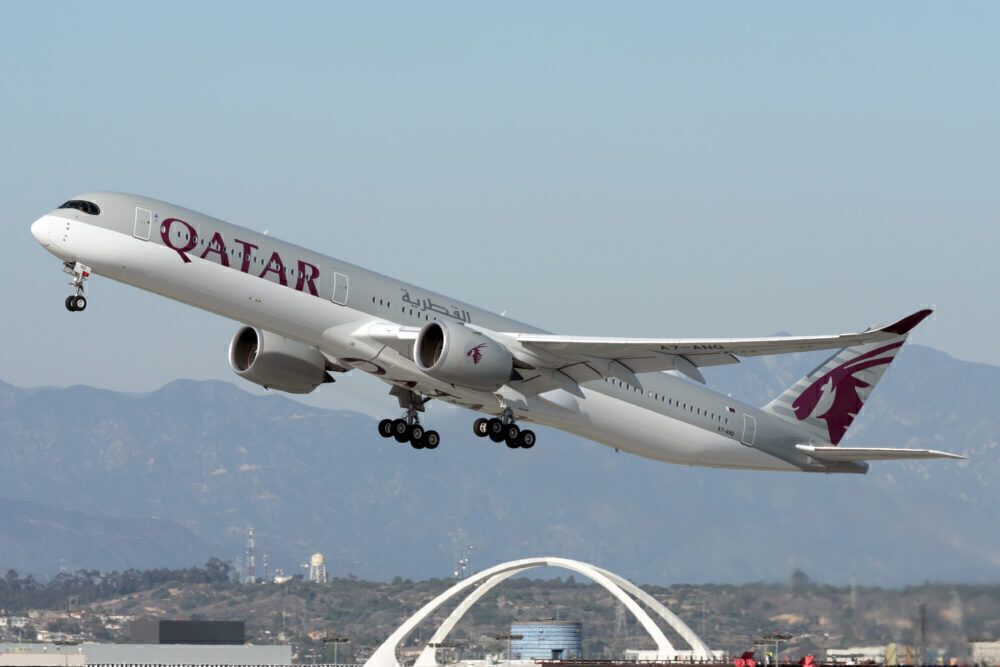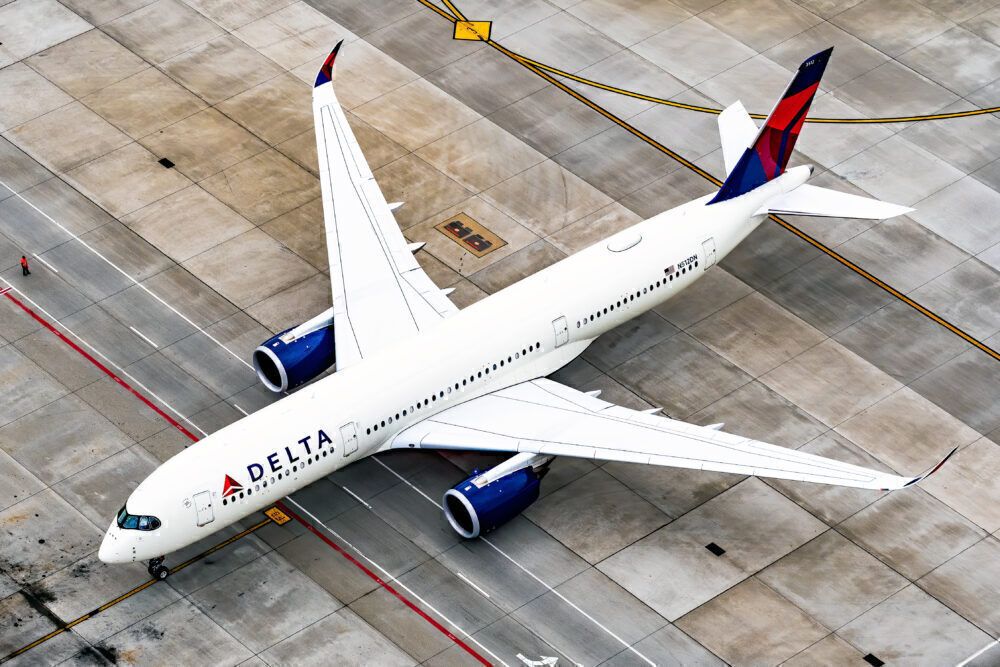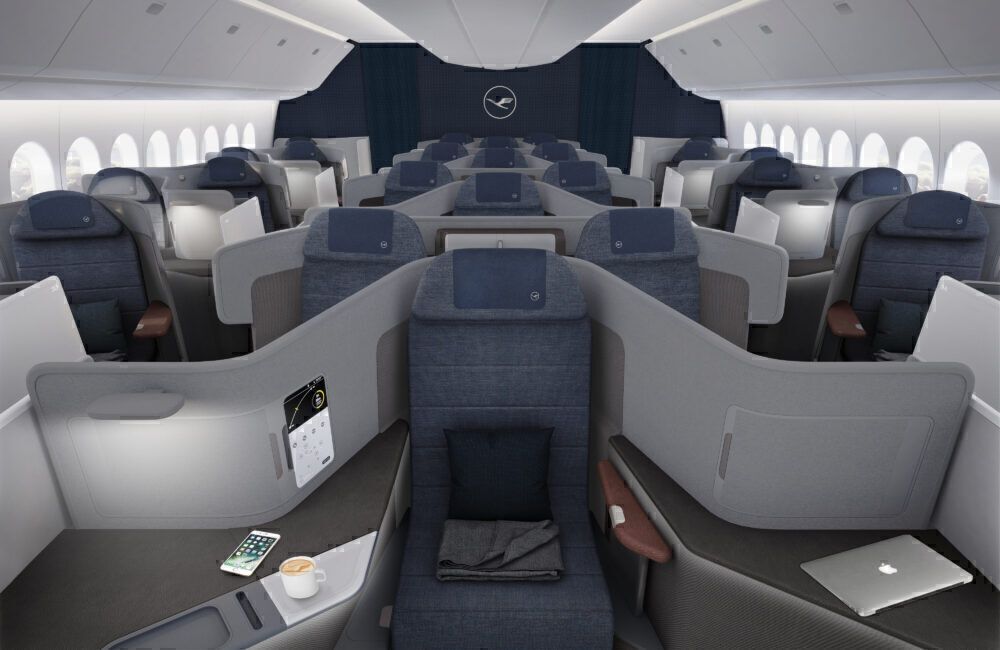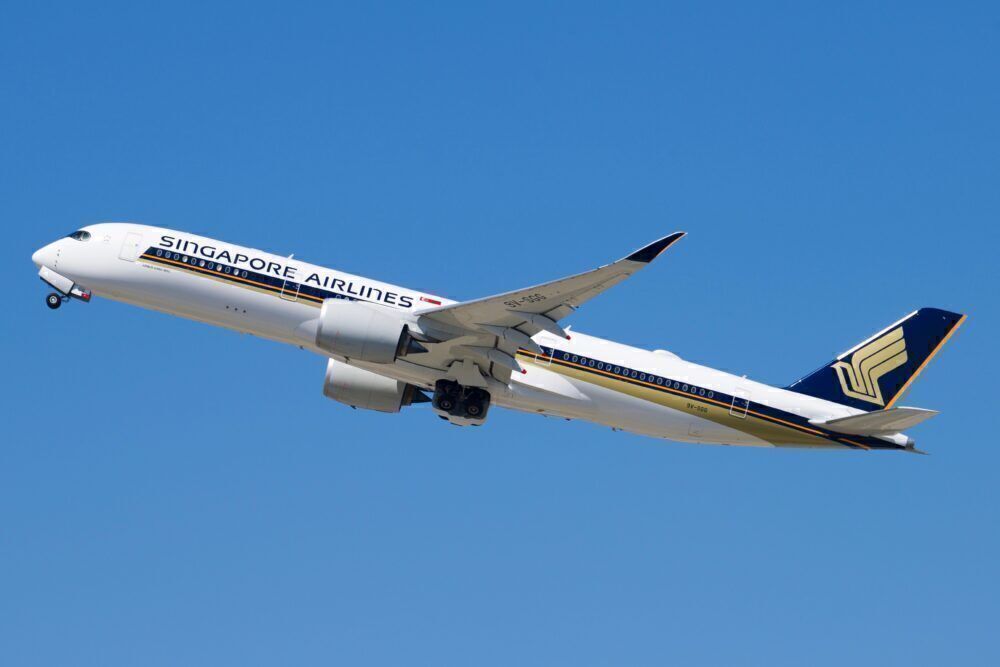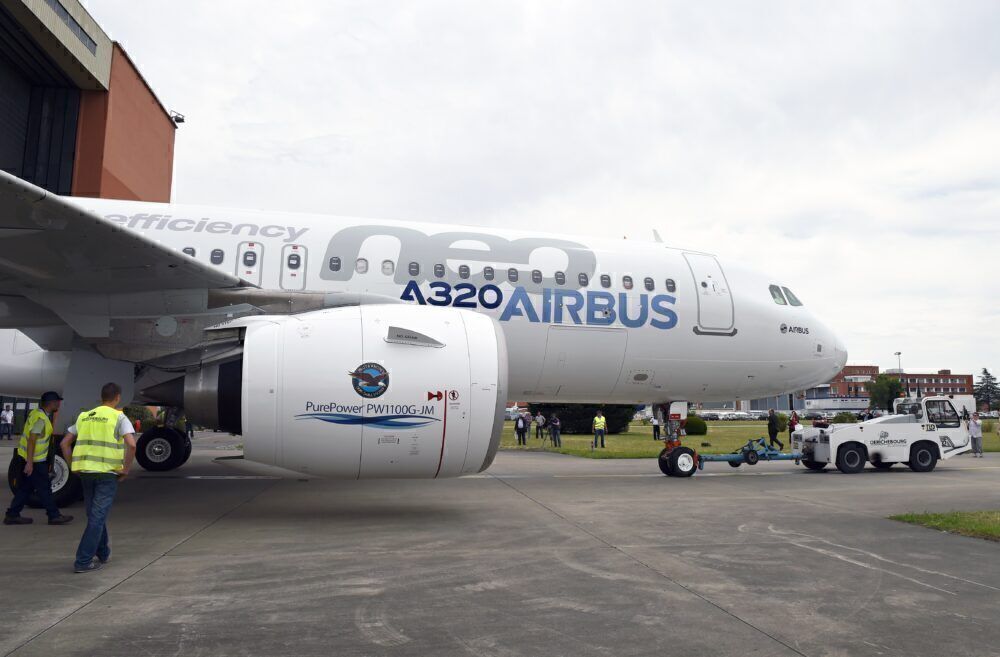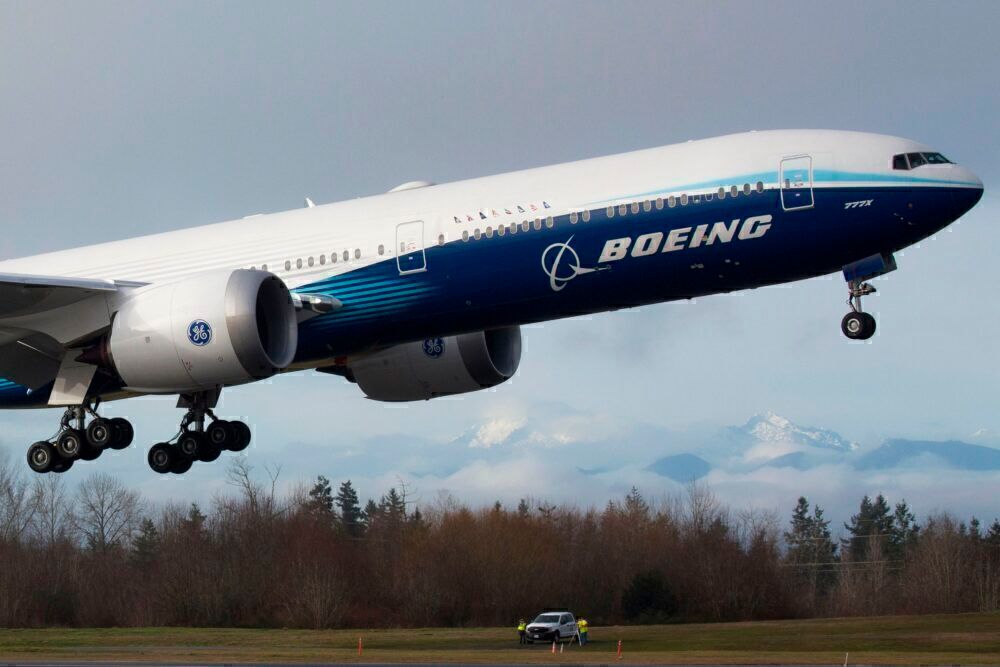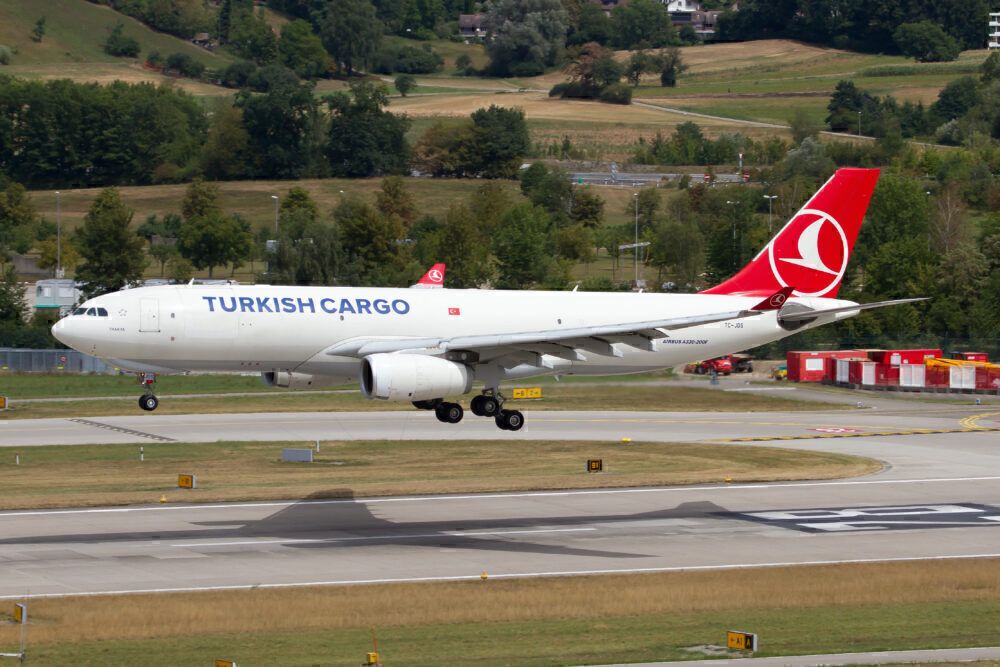The A350 is Airbus’s newest aircraft. Since the ending of the A380 program, it has become its largest offered as well. Unlike other recent updates – such as the A320neo and A330neo – the A350 is a new clean sheet design. We investigate how this came about, developments since launch, and the future.
Why launch the A350?
Airbus developed the A350 to compete with the Boeing 787. Boeing launched this clean sheet project, with a focus on efficiency improvements, in 2004. For Airbus at that time, the A380 had yet to enter service, and it is fair to say it was focussing on a different area.
Improvement in efficiency, and emissions reduction, have been a major focus of aircraft design for decades. It's a new direction since the early days of jet development, when speed, range, and capacity took a leading role.
Aircraft such as the 737 and A320 have been through several variants since launch, each improving on efficiency and operating cost. Developments such as the A320neo and 737 Next Generation and MAX are still based on the same original airframe designs.
So, too, is the A330neo. But to take full advantage of the advantages in technology, Boeing opted for a new design for the 787. Airbus did the same for the A350.
In fact, the A350 competes not just with the 787 but also the 777. It sits somewhere between the two. As Airbus’s largest offering, the A350-1000 will go up against the new 777X as well. Although the larger 777-9 sits above it In terms of capacity.
Designing a new aircraft
Before the launch of the Boeing 787, Airbus was planning its next widebody based on the A330, but with new engines and a partial carbon fiber construction. With the 787 hitting the market and strong early interest from airlines, Airbus had to revisit these plans.
It announced a revised clean sheet A350XWB at the 2006 Farnborough Air Show, but even the Airbus board was not fully agreed on the plans at that stage. A final design emerged later that year. Development was planned to begin in 2007, with a target of entering service in 2013.
The new A350 was planned with three variants – the A350-800, -900, and -1000 in increasing capacity. It would feature a fully redesigned composite fuselage, a composite wing with blended winglets, and new engines.
Its series name A350XWB gives away one feature that differentiated the aircraft from the 787. Its 'Extra Wide Body’ cabin would allow for 10-abreast seating in economy, although most airlines have opted for a more spacious 9-abreast.
Exclusive engines
As with any aircraft, the A350 engines are critical to its performance. General Electric started out as the preferred engine manufacturer, but this later changed to Rolls-Royce.
GE offered a version of its GEnx engine for the A350XWB – the same engine proving popular on the 787. This would work well for the smaller variants, but GE did not offer a higher thrust option for the A350-1000. Rolls-Royce could offer this with the Trent XWB engine, which became the preferred engine for all A350 variants.
Global construction
Airbus started as a consortium of manufacturers across Europe, and its production remains geographically spread, following this same model. The A350 took this further with its A350 project, with several new production facilities launched. Some of the main sites include:
- Broughton in Wales, UK for the wings
- Puerto Real and Getafe in Spain for fuselage and tailplane sections
- Saint-Nazaire, France for the nose fuselage
- Nantes, France for parts of the fuselage and keel beam
- Hamburg, Germany for the rear fuselage
- Bremen, Hamburg for final wing components (after construction in Broughton)
All components come together for final assembly in Toulouse. To facilitate this, Airbus has developed a new transporter – the Beluga XL. The original Beluga was introduced in 1995, based on the A300-600 airframe. To transport both wings of the A350, a larger transporter was required, and the Beluga XL launched in 2020 based on the A330-200.
By volume, this is the largest transport aircraft ever built (but Boeings 747-400 based Dreamlifter beats it for payload, and the huge Antonov An-225 beats them both).
Dropping the smaller variant
The original proposed smallest variant, the A350-800, would have offered a typical three-class capacity of 276 (compared to 300-350 for the A350-900 and 350-410 for the A350-1000). It would have been just over six meters shorter than the A350-900 and offered a small range improvement of 250 kilometers.
It would offer improved economics with its smaller size, and would expand the operating possibilities for airlines. It was initially popular, with as many as 182 orders in mid-2008. Some of these were switched to the A350-900 as airlines revised plans. But the real end for the A350-800 was the launch of the A330neo at the Farnborough Airshow in 2014.
The A330-900 offered a similar capacity to the A350-800. And many airlines already operated A330-200 or A330-300 aircraft, so they could maintain commonality.
Most airlines switched over to the A330neo or went with the A350-900. The smaller A330neo, the A330-800, was not popular and has only had 15 orders. the decision to scrap the A350-800 led to a moderate loss for Airbus - Hawaiian Airlines first switched the A330neo but later canceled this and went with the Boeing 787.
The A350 has 913 orders to date
The A350-900 entered service in January 2015 with Qatar Airways. The larger A350-1000 followed in February 2018, also with Qatar Airways.
As of March 2021, there have been 913 orders – 745 for the A350-900 and 168 for the A350-1000. And to date, 362 and 54 of each type have been delivered by Airbus.
Simple Flying took a detailed look at the main operators for the A350 in late 2020. Qatar Airways is the largest customer, with 76 aircraft ordered (although Singapore Airlines is close behind with 67 and currently has more delivered).
It is very popular across Asia and Europe. But its penetration is lower in the US, with only Delta Air Lines operating it. United Airlines has an order, but this has been deferred until 2027.
Behind the 787
How does this compare to the 787 it set out to compete against? The 787 has sold more so far, but it has been on the market longer. It also crosses more into the lower capacity and range market. As of March 2021, there were 994 aircraft delivered, and 495 remaining on order.
In reality, rather than this showing that the 787 has beaten the A350, it shows the popularity of both of them. The clean sheet developments have been smart moves by both Boeing and Airbus, and this will likely remain so as the focus moves more to efficiency and emissions reduction.
Flagship offering
As a new aircraft and now Airbus’ largest offering, the A350 has formed a leading part of many airline fleets. Like we saw we aircraft like the 747 and the A380, many airlines have chosen the A350 to launch new onboard cabins and products.
British Airways, for example, first offered its new Club Suite – a long-awaited upgrade to its Club World business class product – on the A350. And coming up soon, Lufthansa may use the A350 to launch its new business class product. This was originally intended for the 777X, but with delivery delays, it is now more likely on the A350 or the 787.
Singapore Airlines also deserves mention here. It operates the specifically configured long-range A350-900ULR, with just 67 business class and 94 premium economy seats. This currently flies Singapore to New York as the world’s longest flight.
Future for the A350
Clearly, the immediate future for the A350 is clouded by the pandemic and the slowdown in aviation. Almost 500 aircraft remain on order, and many of these are being delayed or even possibly canceled.
Emirates is one major upcoming A350 adopter. It is planning significant changes to its all A380 and Boeing 777 fleet. Along with the 777X and 787, it has 50 A350-900 on order. The order remains in place, but Emirates is reviewing its fleet needs going forward.
New A350 variants
Looking further ahead, what development could we see for the A350? Although it is still early days for the aircraft, there has already been discussion about a new engine version, a so-called A350neo.
In 2019, we looked at how Airbus was already considering a new version and was in discussions with GE regarding engines, likely based on those used with the 777X. The Rolls-Royce Ultrafan engine is another possibility. It is hoped this will be in service in 2025.
There is also the possibility of a return to the smaller A350-800 variant. Whilst this was originally made obsolete with the launch of the A330neo, a renewed focus on smaller aircraft to meet lower demand post-pandemic could see Airbus revisit its offering.
Amidst the current market, it seems unlikely Airbus would develop any larger variant. This will, of course, leave Boeing ahead in a high-capacity offering. The upcoming 777-9 will beat it for capacity and sit in a category on its own now that the 747-8 and A380 are out of production.
Will there be an A350 Freighter?
And as a final thought, what about the possibility of an A350 freighter? Boeing clearly dominates the freighter market currently with the 747 and 777 freighters. There is certainly space for a new freighter that takes advantage of the technology and efficiency improvements of new airframes. The 777X and the A350 are the obvious candidates.
Boeing has previously expressed the possibility of a freighter based on the 777-8, but nothing has yet been confirmed. Likewise, there has been discussion about an A350 freighter. In March 2021, we looked at reports that Airbus was putting out feelers amongst potential customers.
It would be exciting to see Airbus expand in the cargo market and bring the advantages of a new aircraft. But it remains an ambitious prospect given the state of the industry presently. Cargo demand, and prices, remain high. But there are likely to be plenty of second-hand widebody aircraft around for conversion.
The development would be expensive and challenging as well. One of the advantages of the A350 is its composite fuselage structure, but this does not lend itself well to adding large cargo access doors. Airbus would be the first to try it with such a fuselage.
Airbus may not have conceived the efficient A350 as early as Boeing did with the 787, but it has still worked out well. Feel free to discuss more about the origins, development, and future of the A350 in the comments.

